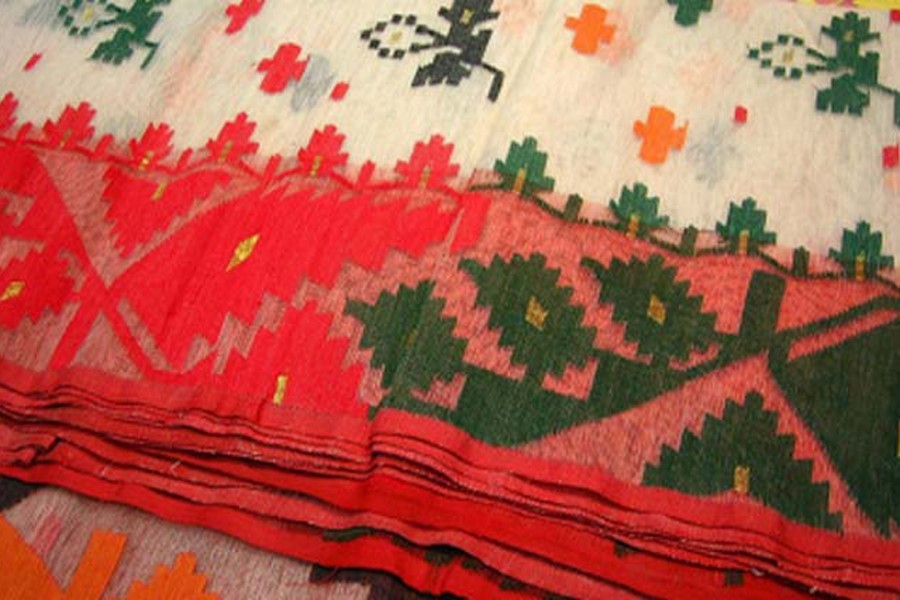
Published :
Updated :

Although sarees still enjoy a prime status as the Bengalee women's favourite attire at ceremonies, they have begun losing their earlier position in the day-to-day life. The two Eid celebrations, the Bangla New Year and weddings witness urban women, especially the young, in lavishly coloured and designed sarees. The traditional Bengalee sarees are far from being phased out. The coming Eid-ul-Fitr may not be an exception. That unlike on the previous occasions this Eid-ul-Fitr will have a wider space for sarees in the market has already been demonstrated. It began in the first week of Ramadan. The event centred round a market organised by Bangladesh Small and Cottage Industries Corporation (BSCIC) at its Jamdani Palli at Demra on the outskirts of the capital. The market was chiefly meant for wholesalers who bought products at the venue to sell them to retailers. On average, the prices of sarees at the market varied from Tk 3,000 to Tk 20,000. Sarees with the price tag of Tk 200,000 also surfaced at the market. The brisk business at the Demra market has not gone in vain. The media coverage in the following weeks on sarees along with their enthusiastic buyers at the Eid markets has amply proved it.
This year's crowded saree shops visibly outshine those of the previous years. Upon viewing the spectacle from different realistic angles, people cannot be termed wrong in identifying the signs of a revival of the sarees. Of all the varieties, it is the hand-woven cotton and silk Jamdanis that greatly attract the women of Bangladesh. The silk Jamdani is traced back to the fabled muslin fabric of the past. Despite the popular liking being confined to both geometrically and florally designed Jamdani saris, the other varieties have also their unique appeals. All of them are handloom products having age-old places of origin. Like the Dhakai Jamdani, originating in Rupganj in Narayanganj near the capital, there are scores of other varieties. They include Tasar, Baluchori, Sambalpuri, Manipuri etc. The sarees from Tangail and a Jamdani variety woven in Faridpur add to the varieties in the country's handloom products. Mainly featuring intricate motifs and designs made on cotton and silk fabrics, these sarees display a kind of creative flair that belongs to artistic rarities. They are now largely on the wane worldwide.
The aesthetic aspect of Jamdani sarees has earned global acclaim, and quite deservedly at that. It has already been adorned with two international plaudits. One of them is the geographical indication (GI) tag recognising Bangladesh as its real place of origin. The other is UNESCO's declaring it as Intangible Cultural Heritage of Humanity. It is only lately that the export potential of Bangladeshi sarees has been brought to focus by the Export Promotion Bureau. It has found markets for Jamdani sarees in Europe, North America and South Africa. These products cater mainly to the expatriates from Bangladesh and India's West Bengal.
The rising vibrancy enjoyed by the country's handloom saree sector notwithstanding, the weavers producing them pass their days in great hardship. In the case of Jamdani, completing a saree demands back-breaking labour. In exchange, the weavers get a paltry sum. Their plight taints the sector. The product's demand-generating capacity and tapping of export potential can assure it of a comfortable place in the economy. But is the issue given a serious thought to?


 For all latest news, follow The Financial Express Google News channel.
For all latest news, follow The Financial Express Google News channel.